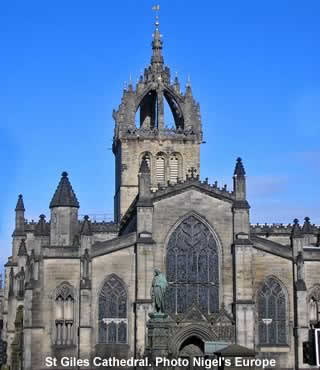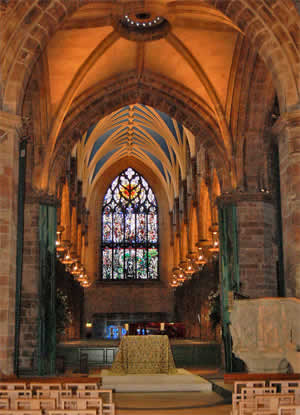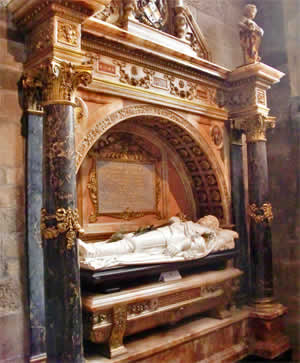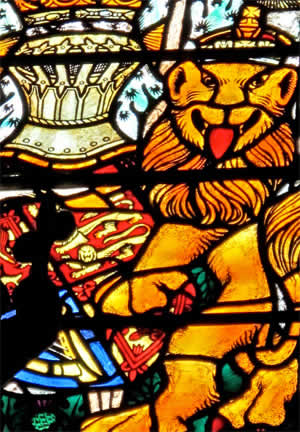St. Giles Cathedral |
|
 |
|||
A huge church on the Royal Mile |
||||
Listen to this article |
||||
|
||||
Sometime in the 7th century, a man called Giles was living alone in the woods. One day he protected an injured deer, and nursed it back to health. Thanks to good deeds like this, Giles ended up becoming the patron saint of invalids and disabled people. He was a respected religious figure throughout the whole Middle Ages, and many churches were built in his honour. |
||||
One of these was in Edinburgh. After being constructed in the 1100s, the building has undergone almost constant change. It was burned down by English raiders in the 1300s and repaired extensively in the following century. Shortly after that, Christian Protestants began to split off from mainstream Catholicism. St. Giles' minister was the leader of this movement in Scotland. His name was John Knox, and he's well remembered. A statue in his image stands tall in the church's nave. |
||||
The work he started continued in the 1600s, when King James the 1st tried to get Scotland to adopt the Anglican prayer books. On the day it was first used at St. Giles, things got a little nasty. A woman called Jenny Geddes threw a stool at the preacher's head, sparking a riot that helped lead the country towards civil war. Soon after the disturbance came the National Covenant, a legal document containing details of the new methods of worship. Despite widespread opposition, many Scottish leaders signed it. The Covenant is on display within the cathedral, as is a replica of Jenny Geddes' deadly stool. |
||||
 Inside St Giles Cathedral Photo jsutka |
||||
When you first enter the building, it's the stained glass and fine stonework that first grabs the eye. However, by exploring a little, you'll come across all sorts of other interesting sights. One of the sadder examples is the tomb of James Graham, the 17th century Marquess of Montrose. His carved image on top of the memorial is a beautiful piece of work, but its purpose is to remember a particularly ugly event in the church's history. During the Civil War, Graham was hung from the neck until dead. His funeral was respectfully held at St. Giles. |
||||
 Tomb of James Graham Photo mark and delwen |
||||
Not far from his grave is a similar monument to Archibald Campbell, the Marquess of Argyll. He was Graham's sworn enemy engaging in constant disagreements with him. Campbell also met the same fate, being executed just outside the gates of the church. |
||||
There's a much more pleasant atmosphere at the Thistle Chapel, just next to the main cathedral. It's home to the Order of the Thistle, an ancient fellowship of chivalrous knights. Admission to the Order can only be given by the Queen herself, as reward for an act of extreme self-sacrifice. |
||||
The chapel building was constructed relatively recently, in 1911. It looks older, as it uses the traditional Gothic style of the 15th century. All of the materials, from the stone blocks to the furniture, were made in Scotland. |
||||
 Stained glass in the Thistle Chapel Photo jhillen69 |
||||
St. Giles is commonly referred to as a cathedral, but this was only really true for two short stints in the 1600s. Churches only officially receive this status if they are the seat of a bishop. For several hundred years the Church of Scotland hasn't had any bishops at all. Nevertheless, this is still an important place for Edinburgh's worshippers. |
||||
|
||||
St Giles Cathedral is open daily from 9am (1am Sundays) to 5pm (7pm on summer weekdays). Entry is FREE but a donation of around £3 is recommended. The Royal Mile, Edinburgh EH1 1RE. Tel: 0131 225 9442 |
||||
|
Pocket Britain is optimised for use on a smartphone or tablet with internet access. All content is subject to copyright. All reasonable methods have been used to ensure information supplied is accurate at the time of publication. However, it is advisable to check information before relying on it. Privacy Policy |